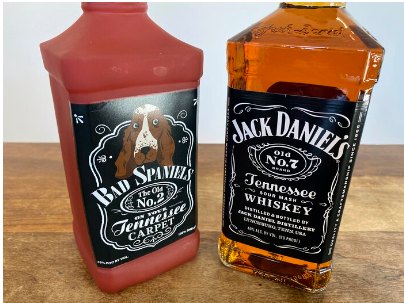Precision / personalized Medicine and Intellectual Property:
Balancing Public Health and Innovation
Summary
Medical technology, diagnostics and treatment, are becoming
increasingly personalized or individualized. “
Precision medicine” (aka
personalize medicine) is the term used to describe the revolution in
biotechnology in which precision is used to identify not only a disease
condition and general treatment but a specific abnormality or predisposition and
a narrowly tailored treatment for the specific abnormality of that individual
based on the individual’s biological makeup, genes or condition. Often
this involves identification of specific biological markers, proteins or genes,
correlated to an identified health condition, and treating the identified
condition with a biological / pharmaceutical agent specifically tailored to the
specific individual and condition.
At the 2019 ITechLaw World Conference in Boston (May 15-17),
I gave a presentation and led a discussion on intellectual property issues
pertaining to precision medicine.
First, we discussed
this revolutionary new tool in medical diagnostics and treatment.
Next, we reflected on current intellectual laws
with a foundation in the industrial age for historical context.
Finally, we discussed current intellectual property laws' applicability to precision
medicine to explore whether existing intellectual property laws are a benefit
to public health and innovation or a hindrance.
My PowerPoint slides from the presentation are available for
download and the following discussion summarizes the presentation:
Discussion
Precision medicine by definition is specific to an individual. For any particular condition, the diagnostic may
need to be adjusted to specifically identify the abnormality in the
individual. Likewise, the specific
treatment of the abnormality in an individual may need to be specifically
tailored to that particular individual.
Conceivably, a different diagnostic and a different therapeutic
treatment may be required for each individual to be treated. As a result, pharmaceutical companies and
diagnostic laboratories may not be able to mass produce broad spectrum
diagnostics and broad spectrum treatments.
Instead, the future of biotechnology almost certainly suggests that this
will not be the case. Further, the
traditional financial incentives in which biotechnology companies can recoup
research and development costs of diagnostics and treatments by mass producing
a diagnostic and treatment likely will need to change.
Current intellectual property rights
that are in place to provide limited monopolies in exchange for public
disclosure of new technology may not be appropriate for the new precision
medicine paradigm. For example, use of the patent system may not be applicable
since a virtual infinite number of diagnostics and/or infinite number of
therapeutic treatments may need to be individually developed and hence patented
to cover the physical diagnostic tool and/or therapeutic agent.
Further, while one might consider that a method of treatment or method of diagnostic may be patentable, patent eligibility of such subject matter has been highly scrutinized and even ineligible for patenting under some countries’ patent laws. Many countries’ patent laws have limitations on the patenting of subject matter relating to diagnostic methods and treatments based on correlation of natural physical conditions and products of natural.
For example, recent U.S. Supreme Court decisions have limited the subject matter eligible for patent protection for inventions relating to natural products and correlations. See, e.g.:
However, often precision medicine involves diagnostics and identification of a “natural” biologically occurring abnormality (i.e. a naturally phenomenon) correlated to a health or disease condition and treatment involves administering a naturally occurring biological or chemical product (i.e. a product of nature) to address the abnormality. Therefore, patent protection may not be available for
precision medicine diagnostics and treatments.
In addition, other forms of IP protection may not be
applicable for precision medicine. While
data exclusivity and/or trade secret protection have been used for prior
technologies, relying exclusively on trade secret protection may thwart the
public interest in having the full disclosure of the diagnostic tool and/or
treatment so that other companies can build on the technology. Instead, relying on trade secret protection
may hinder the advancement of precision medicine such that it does not realize
its full potential.
It is important to reflect on the purpose of an intellectual
property system such as the patent system and data exclusivity for biologics, which is quid pro quo
in which the public receives the benefit of the new technology in exchange for
exclusivity by the developer of the technology.
As a result, the limited monopoly provides exclusivity so that the
company investing in the technology can recoup its investment. Without the ability to recoup investment
costs, companies may not develop new diagnostics and new treatments to advance
precision medicine. Up to this point,
much of the research and development of precision medicine not surprisingly has
been done by non‑profit universities and research facilities funded by grant
money and government subsidies so these institutions do not have the same
pressures to recoup investment costs as the public sector. As research dollars become tighter and
governments which fund research have limited resources, relying exclusively on
universities and government research funding may not be the best way to advance
precision medicine.
As always, a counterargument can be made that strong
intellectual property will benefit only a small number of companies resulting
in high costs of the precision medicine to individuals (i.e. patients) and as a
result will prevent some individuals from access to the precision
medicine. Opponents to this theory will
say that however, without strong intellectual property rights, the precision
medicine would not be developed for anyone as without strong intellectual
property rights which provide for recouping investments costs, companies would
not take the time and invest money to develop the precision medicine in the
first place.
I invite all to post your comments here on this topic to keep the
discussion going. Please provide your thoughts
and remarks on whether current intellectual property rights are a benefit or a
hindrance to the development and deployment of precision medicine.
Send email
feedback- sweyer@stites.com













